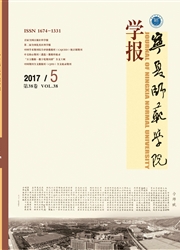

 中文摘要:
中文摘要:
本文通过对庄浪徐家碾剖面全新世黄土-古土壤序列中磁化率与各粒级的相关性分析,认为粘粒组分(<5μm),细粉砂组分(10-5μm)与磁化率呈正相关关系,粗粉砂组分(50-10μm),砂粒组分(>50μm)与磁化率呈反相关关系.其次,对粒度分离后磁化率贡献的测量计算,结果指出粗粉砂(50-10μm)在全剖面对磁化率的贡献最大,其在古土壤层中对磁化率的贡献低于黄土层;其次是粘粒组分(<5 μm),在古土壤层中对磁化率的贡献高于黄土层.粗粉砂对磁化率的贡献主要受到粒级含量的影响,而粘粒物质对磁化率的贡献主要源于其较高的粒级磁化率;粒度分离后各粒级的磁化率呈现出颗粒越细,磁化率越高的变化趋势.这可能是由于细颗粒物质中富含铁磁性矿物,而粗颗粒物质中含有碳酸钙等逆磁性矿物使其粒级磁化率降低.
 英文摘要:
英文摘要:
A high relation Holocene loess-paleosol sequence was found at Xujianian , Zhuanglang county in Gansu province. Detail studies of thd relativity between magnetic susceptibility and grain size show that thde magnetic susceptibility is positive proportional to the content of clay (〈5μm)and silt (10~5μm) ,and reversal proportional to thd contents of coarse silt(50~10μm), sand (〉50μm). Sec- ondly , each group of grain size is abstracted,and which calculates the contribution to thd total susceptibility . The results show that the susceptibility of thd total profile is mainly contributed by thd coarse silt (50~10μm),and thd contribution to thd loess is more than to the palesosols; thd clay (〈5μm) group play the second role,and the contribution to the loess is less than to the palesosols. The content of grain size mainly influences the contribution of the coarse silt ,and the contribution of the clay root in the its magneticsusceptibility.
 同期刊论文项目
同期刊论文项目
 同项目期刊论文
同项目期刊论文
 期刊信息
期刊信息
